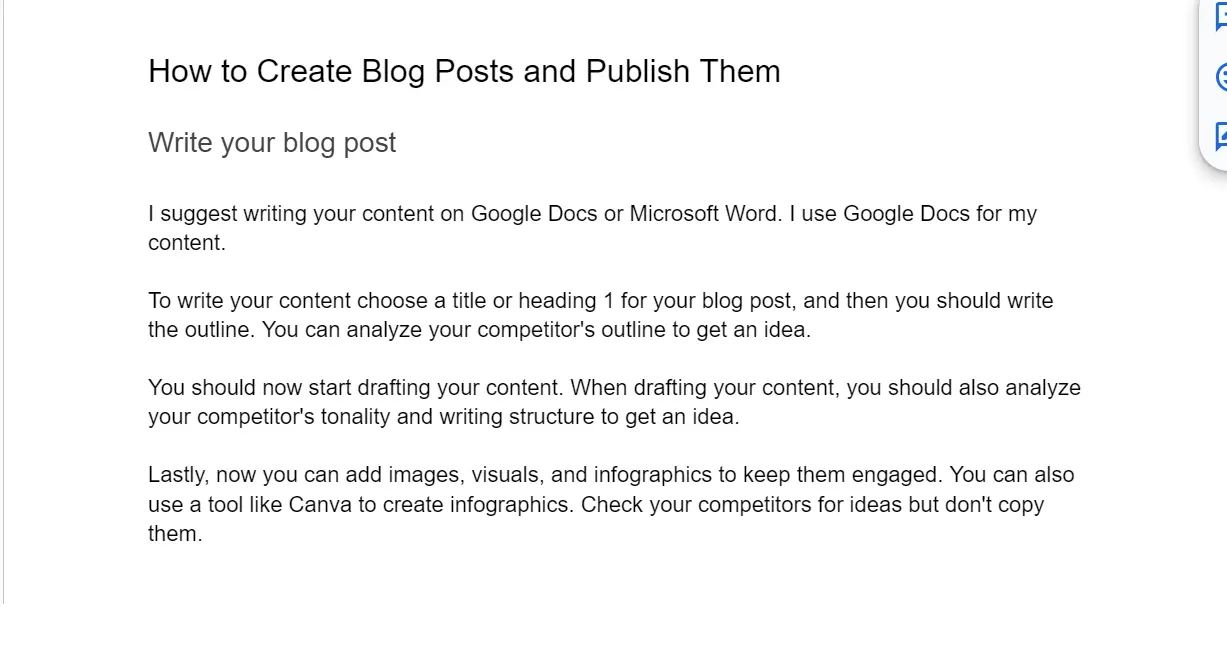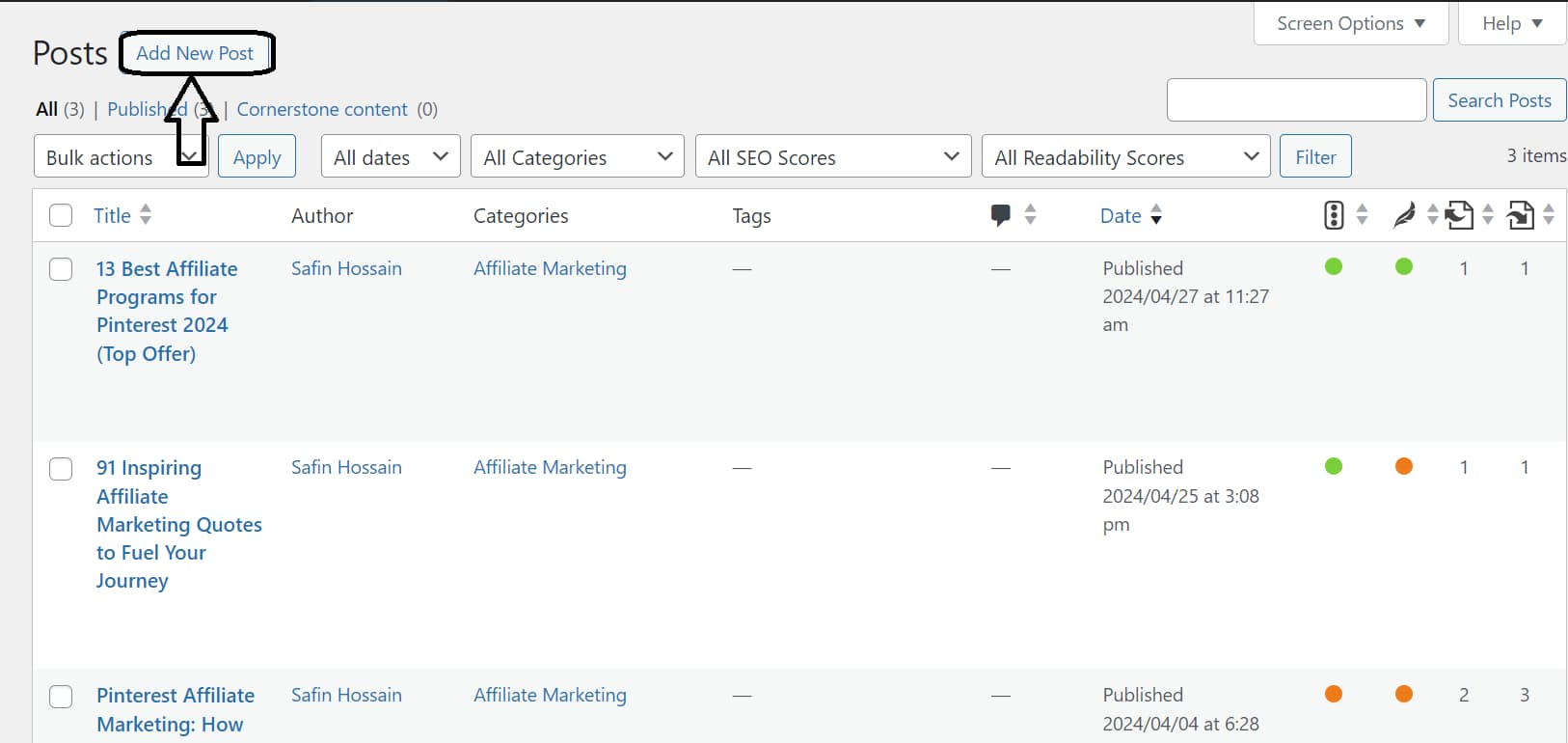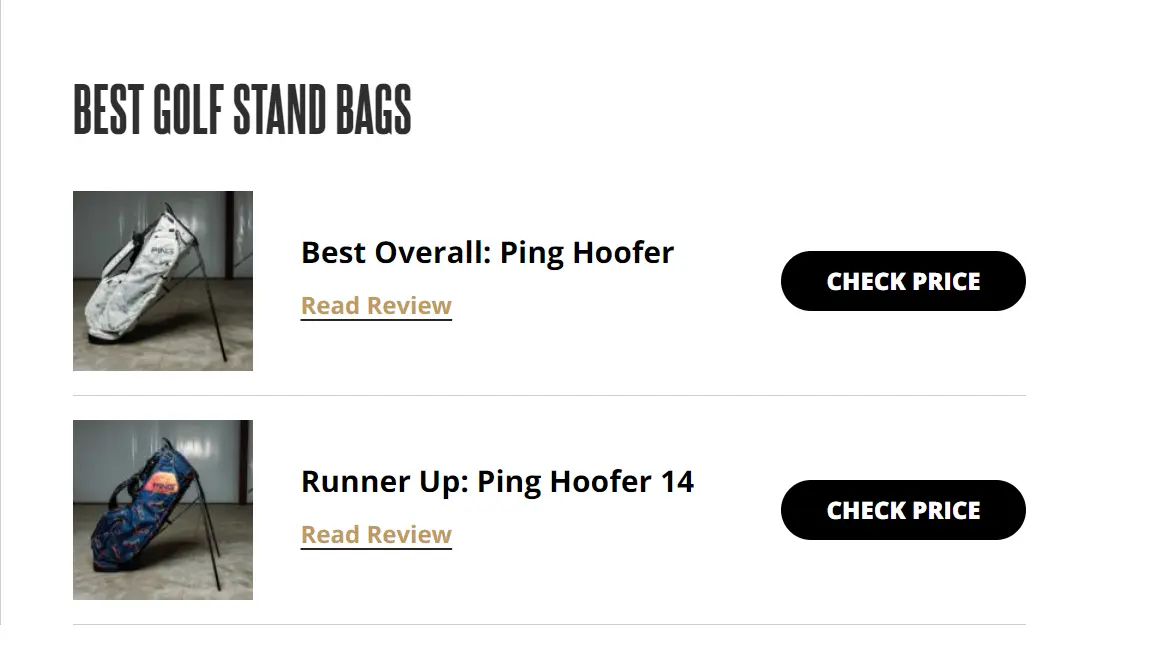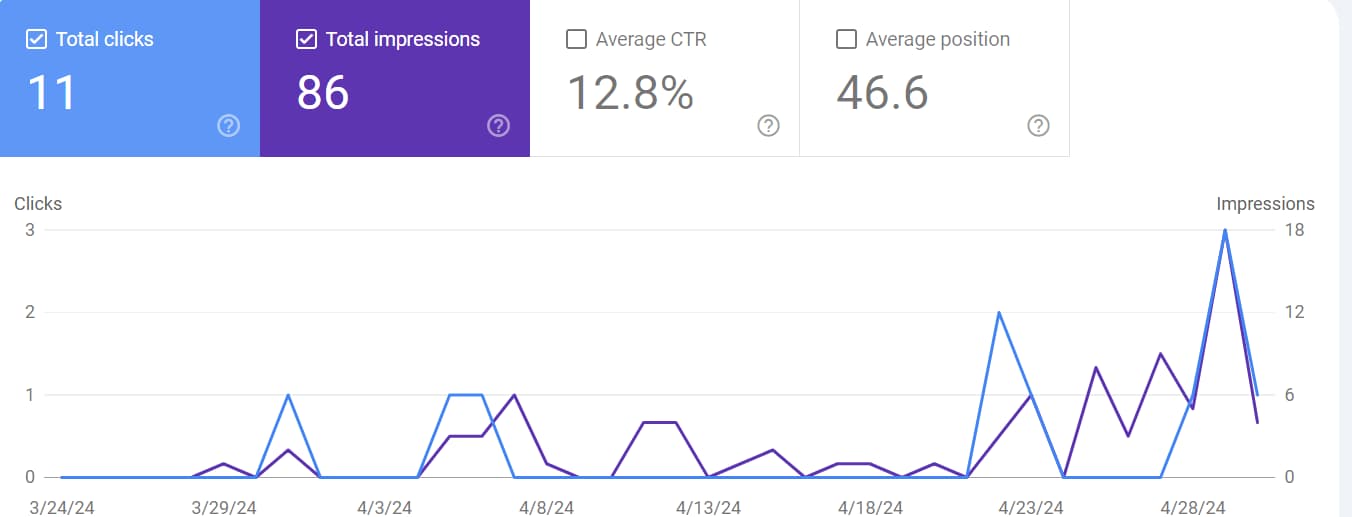
If you want to earn money through affiliate marketing by blog but don’t know how to create a blog for affiliate marketing, then this ultimate guide will help you achieve that.
Affiliate marketing is one of the best ways to earn passive income by promoting products or services and earning a commission when readers click on your unique affiliate links and make a purchase.
With the right strategy, bloggers can make $5,000 to $20,000 per year through affiliate marketing alone.
Around 84% of bloggers use affiliate marketing to monetize their content.
Define Your Niche and Target Audience

Choosing the Right Niche
To choose a niche you should have an interest in it you don’t need to have passion many affiliate marketers quit because of a lack of interest.
Selecting a niche that aligns with your interests and has growth potential is crucial for building a successful affiliate marketing blog, as this will make creating content more enjoyable and authentic. However, avoid overly saturated niches where competition is intense.
To find a niche write down your interest by 1,2,3,4. Then you need to verify that niche by competition and profitability. To check competition you should check there are not very giant authoritative websites.
Understanding Your Target Audience
Once you’ve identified a promising niche, it’s essential to understand your target audience thoroughly. Join relevant online communities, forums, and social media groups to observe their interests, pain points, and language.
Utilize keyword research tools to uncover popular search terms and content topics that resonate with your audience.
You have general knowledge about your niche so it will be easy to identify your target audience. You can also do a quick research about your niche.
- Pro tip
You also use Chatgpt to identify your target audience but it would be better to do it by self
Selecting Relevant Affiliate Programs and Products
I recommend starting with a trusted affiliate program like Amazon Associate when you are new.
With a clear understanding of your niche and target audience, carefully select affiliate programs and products that align with their interests and budgets.
Prioritize programs that offer products or services you’ve personally used and can genuinely recommend.
Remember, in affiliate marketing, you play one of three roles: the seller, the affiliate marketer, or the consumer. As an affiliate marketer, narrowing down your niche and selecting products you believe in is crucial for building a successful and sustainable income in your affiliate marketing blog.
Once you’ve selected the appropriate affiliate programs and products, you can promote them through various content formats on your blog. Write tutorials, product reviews, or recommendation blog posts that highlight the features and benefits of the products you’re promoting.
Incorporate your unique affiliate links within these posts to earn commissions when readers make purchases.
By carefully selecting affiliate programs, evaluating product potential, aligning with your niche, promoting trustworthy companies, and disclosing affiliate relationships, you can establish a successful and ethical affiliate marketing strategy on your blog. You have to also promote affiliate links in order to get clicked and make a sale.
Make Your Blog Website Online

Now you have a niche it is time to know how to create a blog for affiliate marketing and earn some passive income.
Choose a Name for Domain
Choosing a domain name is an important step for your website or online presence. Here are some tips to help you select a good domain name:
- Make it memorable: Choose a name that is easy to remember. Short, catchy names are often more memorable.
- Keep it simple: Avoid complex spellings or words that are difficult to pronounce. Your domain name should be easy for people to type and share.
- Reflect your brand: Your domain name should reflect your brand identity or the purpose of your website. It should give visitors an idea of what to expect when they visit your site.
- Consider keywords: If possible, include keywords related to your niche or industry in your domain name. This can help improve your website’s search engine ranking.
Choosing a Hosting Provider
you need to have hosting to get your website online. I suggest You Dream Host as the best for beginners to launch your affiliate journey.
Selecting a Theme and Design Tools
Install the Astra WordPress theme, which is popular and robust, and offers many starter templates. Utilize the Elementor plugin, a user-friendly page builder, to easily design and customize your website. Consider using an Elementor-based travel blog template as a starting point, and modify it by changing the background image, and text, and adding or removing sections as per your requirements. Incorporate relevant images and content on the homepage, such as “Read More” sections for your blog posts. Optimize button links to drive traffic to desired pages, like a “Top Tomatoes” article.
Setting Up an Affiliate Program
While Bluehost is often recommended for long-term business hosting ($3.95/month with a free domain for 1 year), you can also consider using a top-rated WordPress plugin like AffiliateWP to create and manage your affiliate program. AffiliateWP integrates seamlessly with Easy Digital Downloads, a popular WordPress e-commerce plugin, and provides robust features for affiliate management, including customizable affiliate areas, commission tracking, payout options, and more.
Setting up an affiliate program can offer benefits such as increased reach, cost-effective marketing, higher conversion rates, improved SEO, and stronger relationships with affiliate partners. The step-by-step guide to setting up an affiliate program using AffiliateWP includes installing the plugin, launching the onboarding wizard, customizing the affiliate area, adding and managing affiliates, and setting up payout options. Technical skills are not required, as these WordPress plugins are user-friendly.
Building with Free Tools
According to an experienced affiliate marketer, the best and most popular way to build an affiliate marketing website is by using WordPress and Elementor . By utilizing free tools, with the only cost being hosting (which can be obtained for less than $3 per month using Hostinger), you can create a website with a structure consisting of a Home page, Blog page, About page, and Contact page. The primary focus will be on the blog posts, where affiliate links can be included to generate revenue.
Managing Affiliates
Popular affiliate manager plugin options like AffiliateWP, Affiliate Royale, and Affiliates Manager can help streamline the process of managing affiliates. These plugins provide features such as easy affiliate approvals, affiliate portals, tracking, and customization. Affiliates can log in to a personal dashboard to view their information, and the plugins can help set up important pages like the affiliate homepage, registration, and login.
Joining affiliate networks like ClickBank can help attract potential affiliates, and offering competitive commissions, usually 50-75%, can incentivize them. Providing affiliates with helpful resources like pre-made ads, testimonials, and keywords can further support their efforts.
How to Create Blog Posts and Publish Them
Write your blog post

I suggest writing your content on Google Docs or Microsoft Word. I use Google Docs for my content.
To write your content choose a title or heading 1 for your blog post, and then you should write the outline. You can analyze your competitor’s outline to get an idea.
You should now start drafting your content. When drafting your content, you should also analyze your competitor’s tonality and writing structure to get an idea.
Lastly, now you can add images, visuals, and infographics to keep them engaged. You can also use a tool like Canva to create infographics. Check your competitors for ideas but don’t copy them.
Publish your blog post

Login to your WordPress website using /wp-admin. Go to the post and click on Create a new post then paste the post you write. Check the post and click publish now your post is uploaded to your website.
How to Create High-Quality Content

Do your research:
Thorough research is essential for creating high-quality content. Make sure your information and facts are accurate, up-to-date, and supported by credible sources. This applies to any type of content, whether it’s an article, video, podcast, or infographic.
My way to do it is by competitor research. I looked at what type of information and facts my competitors have.
Be original:
While it’s okay to draw inspiration from others, strive to bring your unique perspective and voice to your content. Don’t simply regurgitate information that’s already out there—add your own insights, experiences, and opinions to make your content stand out.
You can also check for plagiarism. I use Duplichecker in the free plan you can check 1000 words.
Focus on readability: Make your content easy to read and understand. Use clear and concise language, and use headings, subheadings, and bullet points to help your reader understand easily
You can also use a tool like Hemingway to improve readability.
Optimizing for Search Engines
To drive organic traffic and increase the visibility of your affiliate content, follow SEO best practices by creating valuable content that ranks well in search results. Conduct keyword research using tools like Ubersuggest, Ahrefs, or Semrush to identify popular keywords and topics in your niche.

Engage with similar blogs to understand the type of content they provide, and use tools like Answer the Public to generate unique content ideas and angles. Incorporate relevant keywords in the title and throughout the content, and include images, videos, and other multimedia to enhance the user experience.
Engage with your audience:
Respond to comments, questions, and feedback from your audience to foster engagement and build relationships. Encourage discussion and interaction around your content.
How to Monetize With Affiliate Marketing
Building an Audience Before Affiliate Marketing
You should have some audience on your social media and email subscribers. What if you don’t have an audience then you should start creating content
Before diving into affiliate marketing, it’s essential to build a brand and a following on social media or a blog. This allows you to establish trust and credibility with your audience, increasing the likelihood of successful affiliate sales.
Developing an Affiliate Linking Strategy
Affiliate marketing is all about the audience now you have an audience then you can use your affiliate links that your audience is relevant to.
Craft content that naturally integrates affiliate links, such as product reviews, tutorials, or comparisons. Then use your unique affiliate links when someone reads your content and makes a purchase with your affiliate links you get a commission.
This approach ensures that your affiliate promotions are relevant and valuable to your audience, rather than appearing as blatant advertisements if not your audience will not be very likely to purchase it.
Utilize a newsletter to drive affiliate sales by linking back to content that contains your affiliate links. This strategy keeps your audience engaged and informed about products or services you genuinely recommend.
You should Try to build an email list
Focusing on Genuine Recommendations

You should not be greedy just promote the products that are getting you the most commission. For long-term success, you need to focus on genuine recommendations.
- Pro tip
You can promote medium-budget products with good rating
Managing Expectations
It’s important to have realistic expectations when starting affiliate marketing as a content creator.
Affiliate marketing is unlikely to be a major income source initially, with estimates suggesting around $100 per month per 10,000 monthly pageviews. Creating and selling your own digital products can be more lucrative for small creators.
Providing Value and Resources
Understand your audience’s position in the marketing funnel (awareness, interest, conversion) and create content accordingly.
Once you find their pain point Try to sell them a solution, not a product.
Provide resources, product recommendations, and email signup opportunities to nurture your audience and encourage conversions. Aim for a consistent posting schedule to keep your audience engaged, and create a mix of informative, entertaining, and product-focused content.
Conducting Thorough Research
Research authoritative sources like industry experts, published studies, and reports from reputable organizations to ensure the accuracy and credibility of your content. Use online tools like Google Trends to identify trending topics in your industry.
This is my strategy, You can make a list of niche experts, and authoritative, trusted websites and read them frequently.
Strategically Placing Affiliate Links
Insert affiliate links in various types of blog posts, including product reviews, case studies, tutorials, and product comparisons. Embed affiliate links into blog posts such as product reviews, recommendations, comparisons, roundups, ‘how-to’ guides, and ‘alternatives to’ articles.
Always remember to give them value they will give you revenue
Create gift guides and product roundups, incorporating affiliate links early and often in a tasteful manner. Embed YouTube videos in your blog posts to improve time on the page and expose affiliate links to a wider audience.
Promote Your Affiliate Blog

Social Media Promotion
Leverage social media platforms to promote your affiliate blog and reach a wider audience. Share links to your blog posts and affiliate products on platforms like Twitter, Instagram, and Pinterest, using relevant hashtags to increase visibility. Additionally, create engaging social media content, such as educational videos or product demonstrations, and include your affiliate links in the descriptions.
You can also use my strategy which is to choose a topic and upload it on the blog then create content on your social media and YouTube. you can share the link to your blog with your audience.
Email Marketing
Build an email subscriber list and utilize email marketing campaigns to promote your affiliate links and blog content. Craft newsletters that provide value to your subscribers while strategically incorporating affiliate links and promotions. Consider offering lead magnets, such as ebooks or checklists, that include affiliate links to entice subscribers.
There are several email marketing tools you can choose that fit you and your audience i recommend choosing MailChimp
Guest Posting
Guest posting is one of the best ways to promote your blog. You can reach other bloggers in your industry and pitch them a topic you want to write about if they like your topic then start drafting the topic if they like your article they will give you a backlink their audience now can come to your blog. If you create high-quality content they can become a regular reader of your blog. also, google gets a positive signal when you have good website backlink.
Online Communities
Participate in online forums, groups, and communities related to your niche. Engage with members, share valuable insights, and strategically promote your affiliate links when appropriate, ensuring that your contributions provide genuine value to the community.
Video Marketing

Combine affiliate marketing with video marketing on platforms like YouTube. Create educational videos, product reviews, or tutorials, and include your affiliate links in the video descriptions or annotations. Additionally, mention and promote relevant affiliate products during your video content.
Podcasting
Leverage the power of podcasting to promote your affiliate links. During your podcast episodes, discuss and recommend products or services you genuinely endorse, and include your affiliate links in the show notes or episode descriptions.
Paid Advertising
Consider utilizing paid advertising strategies to scale your affiliate marketing efforts. Platforms like Google Ads, Facebook/Instagram ads, and TikTok ads can help you reach targeted audiences and drive traffic to your affiliate links and blog content.
Webinars and Online Courses
Incorporate affiliate links into webinars, online courses, and other educational content you create. This allows you to provide value to your audience while promoting relevant affiliate products or services.
Retargeting Ads
Implement retargeting ad campaigns to re-engage visitors who have previously interacted with your affiliate links or blog content. However, be mindful of potential commission reductions on sale items when using retargeting strategies.
Resource Pages
Create a dedicated resource page on your blog that compiles affiliate links to tools, products, and services you recommend. Promote this resource page through email marketing campaigns and social media channels, positioning it as a valuable resource for your audience.
Remember, consistency and providing value to your audience are key when promoting your affiliate blog. Focus on building trust, creating relevant content, and strategically incorporating affiliate links in a way that enhances the user experience.
Track and Analyze Performance
Setting Clear Goals
Setting clear goals for your affiliate marketing efforts, such as increasing sales, driving more traffic, or improving conversion rate, is crucial. Having specific, measurable goals will help you track progress accurately. Or you can also have a goal like every week you upload high-quality content, and gain x amount of backlinks.
Utilizing Google Analytics

Google Analytics is a powerful tool for tracking affiliate marketing performance. Set up goals and events to monitor conversions, traffic sources, and user behavior on your website. This data is crucial for optimizing campaigns and improving ROI.
To set up Google Analytics go to their website and sign up using Gmail. Follow what they say you can also install a plugin like a site kit.
Tracking Affiliate Links
Utilize tools like Pretty Links or Thirsty Affiliates to track the performance of your affiliate links. These can help you monitor clicks, conversions, and sales generated by each link. Additionally, incorporate UTM parameters in your affiliate links to track the performance of your marketing campaigns in Google Analytics, allowing you to see which campaigns are driving the most traffic and conversions.
Also, some affiliate program have their own tracking so that time you don’t need tools of
Monitoring Conversion Rates
Conversion rate is essential for optimizing your affiliate marketing efforts.
Use Google Analytics or your affiliate network’s reporting tools to track conversion rates and identify areas for improvement. Split-test different elements of your campaigns, such as ad creatives, landing pages, and calls-to-action, to see which performs best and optimize for maximum conversions.
- Pro tip
For a higher conversion rate experiment with different things and then improve a little conversion just experiment.
Optimizing with Data-Driven Approach
Analyze the data from your tracking and use it to optimize your campaigns for better performance and higher conversions. A data-driven approach is key to succeeding in affiliate marketing.
Monitoring Traffic and Conversions

Use Google Analytics to monitor your affiliate blog’s traffic and conversions. Track metrics like number of visitors, page views, bounce rate, time on site, traffic sources, and device usage. Set up goals and events to track specific actions like clicking on affiliate links.
Tracking Earnings and Commissions
Utilize affiliate network dashboards to track your earnings and commissions. See details like clicks, sales, leads, referrals, commission rates, average order value, and conversion rates for each merchant or product you promote.
Monitoring SEO and Keyword Rankings
Use tools like SEMrush or Ahrefs to track your SEO and keyword rankings. This helps you understand how your website ranks for keywords relevant to your niche and affiliate products.
the best way is to use Google Search Console. If you already set up your Google Analytics then the search console will automatically set up.
Analyzing Key Performance Metrics
Analyze key performance metrics like click-through rate (CTR), conversion rate (CR), revenue per click (RPC), return on ad spend (ROAS), and cost per acquisition (CPA).
| Metric | Description |
| Clicks | The number of times visitors click on affiliate links . |
| Impressions | The number of times affiliate ads/banners are displayed . |
| Click-Through Rate (CTR) | The ratio of clicks to impressions, expressed as a percentage . |
| Conversion Rate | The percentage of visitors who complete a desired action (e.g., purchase) after clicking an affiliate link |
| Average Order Value (AOV) | The average amount spent by customers who complete a purchase through affiliate links |
| Earnings Per Click (EPC) | The average commission earned per click on affiliate links. |
| Revenue | The total amount of money generated from affiliate marketing efforts . |
| Return on Investment (ROI) | The ratio of revenue to expenses, expressed as a percentage . |
| Bounce Rate | The percentage of visitors who leave the website after viewing only one page |
Segmenting Data for Insights
Segment your data by traffic sources, affiliate networks, offers, links, and landing pages to identify top-performing channels and opportunities for optimization.
Benchmarking Performance
Benchmark your performance against your own goals as well as industry standards to evaluate your progress and identify areas for improvement.
Continuous Optimization

Continuously track, analyze, and optimize your affiliate marketing efforts to maximize your commissions and earnings.
You should read more to learn more about affiliate marketing and subscribe on YouTube (Digital Safin).
Identifying Top-Performing Channels
Identify which channels (websites, social media, search engines) drive the most traffic and conversions.
Once you find your top-performing channel you should more effort into that rather than anything.
Learn from your previous mistake.
Calculating ROI
Calculate ROI using the formula: ROI = (Revenue – Expenses) / Expenses * 100%.
For your niche Identify which promotion gives you the best ROI (return on investment) and stick to that.
Optimizing Content and Ad Placements
Optimize content and ad placements based on CTR and conversion rates.
Some of The best platforms for ads are Facebook, Google, and YouTube. Utilize which works best for you.
Continuous Testing and Iteration
Continuously test and iterate strategies based on performance insights.
In affiliate marketing, you should focus on improving strategies and conversion rates. Experiment with different aspects for the best result.
FAQs
How to create a blog for affiliate marketing (summary)
1. Choose Your Niche
2. Do Market Research
3. Select Affiliate Programs
4. Choose a Blogging Platform
5. Register a Domain Name
6. Set Up Hosting
7. Install WordPress (if using)
8. Customize Your Blog
9. Create High-Quality Content
10. Optimize for SEO
11. Promote Your Blog
12. Monitor and Analyze Performance
13. Build an Email List
14. Stay Compliant
15. Stay Updated and Adapt
Each step plays a crucial role in establishing and growing your affiliate marketing blog.
What are the steps to initiate a blog focused on affiliate marketing?
To start a blog for affiliate marketing, follow these steps:
- Identify your niche based on your skills and interests.
- Choose a platform for your content.
- Look for and join affiliate programs that suit your niche.
- Produce high-quality content.
- Attract visitors to your site to engage with your affiliate links.
- Encourage clicks on your affiliate links to potentially earn commissions
Is it possible to earn money through affiliate marketing blogs?
Yes, bloggers can earn money by joining affiliate programs offered by various companies, both big and small. Once you’re part of an affiliate program, you’ll receive a unique link for products. If someone clicks on your link and makes a purchase, you’ll receive a commission.
Which are the most profitable niches for a blog in affiliate marketing?
The top niches for affiliate marketing, which are considered lucrative, include:
- Fashion, with numerous sub-niches for specialization.
- Travel, offering a wide range of products and services to promote.
- Technology is a rapidly evolving and high-demand sector.
- Education, where there’s a constant need for learning resources.
- Gaming is a passionate and growing community.
- Home Decor, which appeals to a broad audience interested in home improvement.
- Health and Wellness, a niche with a focus on personal wellbeing.
- Finance, where advice and products are always in demand.
Why should I consider having a blog for affiliate marketing?
Blogs are among the most effective types of content for affiliate marketing. They are relatively easy to set up, and if you have expertise or a strong interest in a particular product or niche, you can authentically convey your knowledge and passion. This authentic approach can create compelling content that resonates with readers and encourages them to explore and purchase products through your affiliate links.
